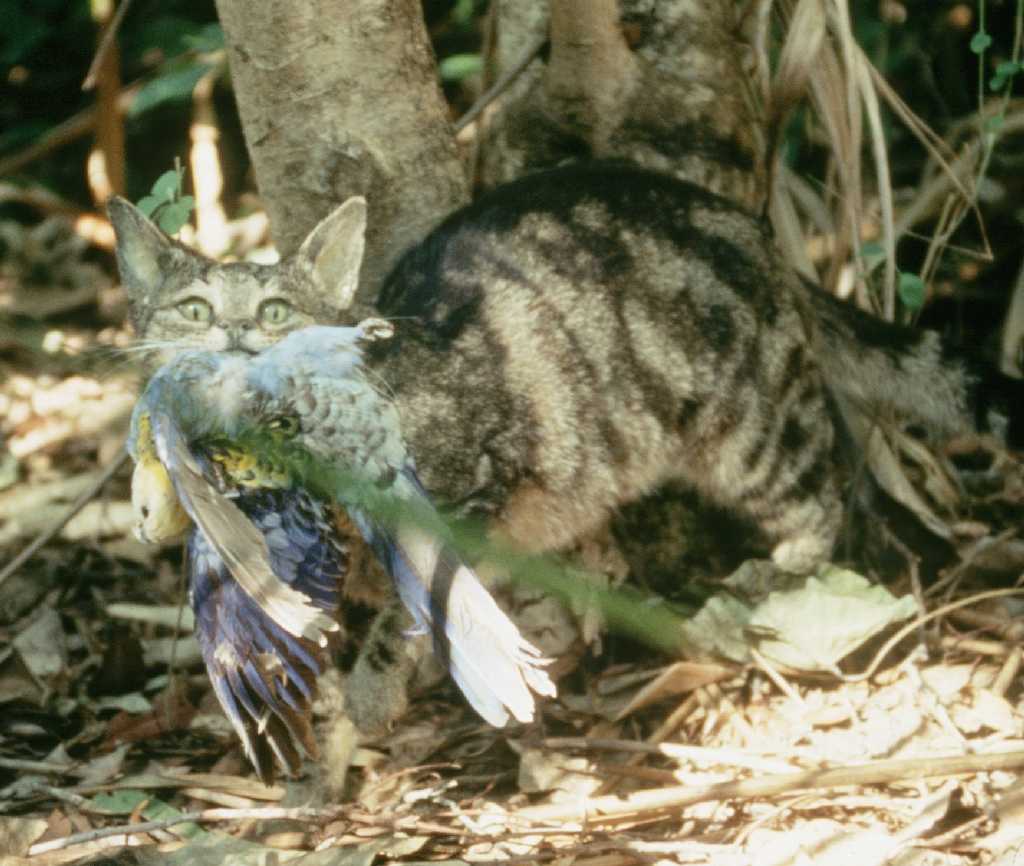
New research: Cats kill more than one million Australian birds per day
Monday, 02 October 2017Feral cats kill 316 million birds and pet cats kill 61 million birds in Australia every year. This equates to cats killing more than 1 million Australian
birds every day. More than 99% of these casualties are native birds.
These are some of the findings of recently published research
by a group of Australian environmental scientists.
The estimates are based on results from nearly 100 studies across the country, each sampling cat density, and another set of nearly 100 studies across
the country that assessed cat diet.
Lead researcher Professor John Woinarski said that while previous research has looked at the impact cats are having on Australia’s mammals, this is
the first nation-wide assessment of the impact of cats on Australia’s birds.
“Everyone knows that cats kill birds, but this study shows that, at a national level, the amount of predation is staggering, and is likely to be driving
the ongoing decline of many species,” explains Professor Woinarski, from Charles Darwin University.
The study also found that the highest rates of cat predation on birds is on Australia’s islands and in remote arid Australia, where the number of
birds killed by cats each year can reach 330 birds per square kilometre.
In a second study the research team also looked at which bird species
are at most risk from cat predation. They found records of cats killing 338 native bird species – almost half of Australia’s native bird species. This
included 71 threatened bird species.
“We found that the birds most likely to be killed by cats are medium sized birds, birds that nest and feed on the ground, and birds that occur on
islands or in woodlands, grasslands and shrublands.”
“For Australian birds, cats are a long-standing, broad-scale and deeply entrenched problem that needs to be tackled more effectively” Professor Woinarski
said.
Australia’s Acting Threatened Species Commissioner, Sebastian Lang, said “This evidence is extremely important, and of great concern.
“Our knowledge of the impacts of cats on threatened mammals was a major stimulus for our first-ever national Threatened Species Strategy, which prioritised
actions to control feral cats,” Mr Lang said.
“This new research emphasises the need to continue working to reduce the impact of cats on our native biodiversity.
“The number of birds killed by pet cats is also high, but I would like to commend pet owners who are containing their cats instead of letting
them roam freely,” Mr Lang said.
The research was undertaken by the Threatened Species Recovery Hub of the National Environmental Science Programme. The Hub is a collaboration of
10 leading Australian universities and the Australian Wildlife Conservancy, to undertake research to support the recovery of Australia’s threatened
species.
The work has been published in the science journal Biological Conservation.
Photos:
Photos are available in dropbox to accompany this story. Photographers
must be credited.
Media inquiries:
Jaana Dielenberg, TSR Hub Science Communication Manager, 0413 585 709 j.dielenberg@uq.edu.au
Top image: Cat with a native Pale Headed Rosella. Photo: Brisbane City Council CC